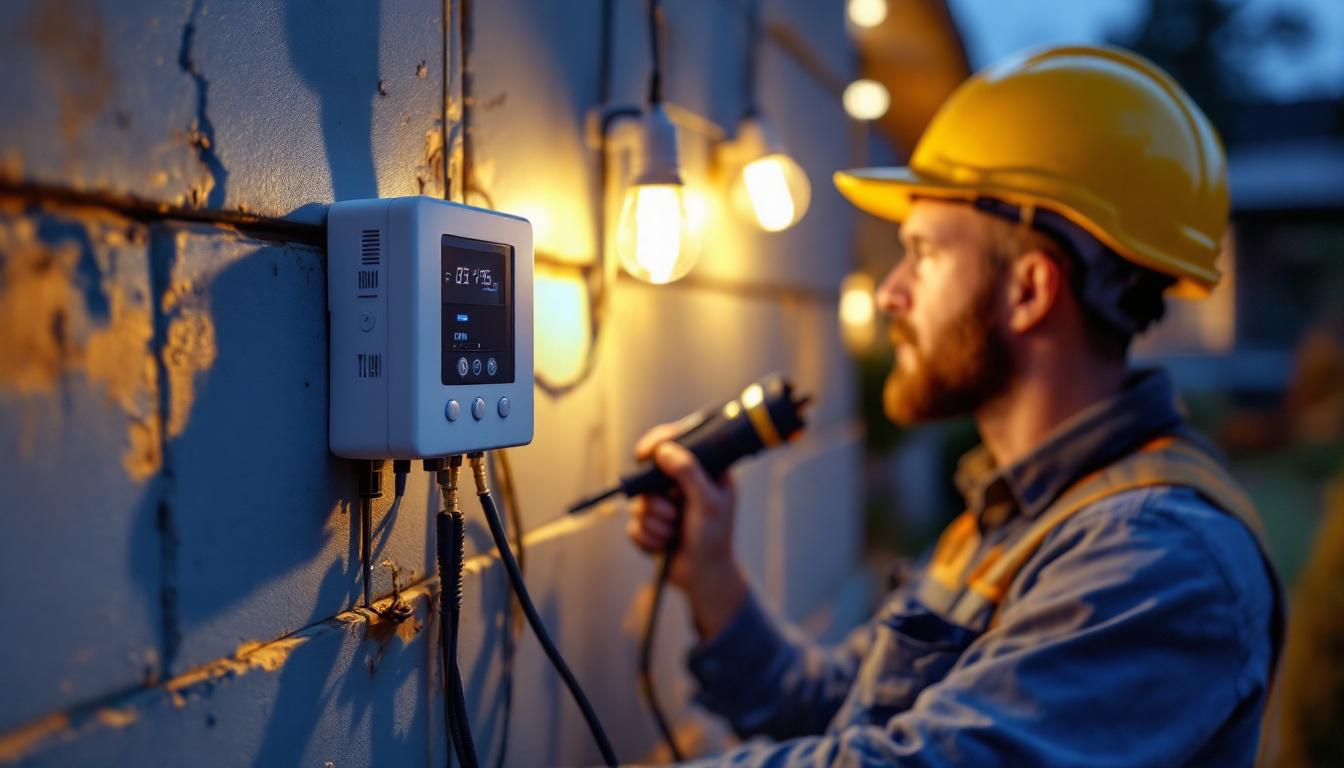
As outdoor lighting continues to evolve, the importance of reliable and efficient control systems cannot be overstated. Hardwired timers are an essential component for lighting contractors looking to enhance the functionality and appeal of outdoor lighting installations. This article delves into the various aspects of hardwired timers, their benefits, installation considerations, and best practices for use in outdoor lighting projects.
Hardwired timers are devices that allow for the automatic control of outdoor lighting systems. Unlike plug-in timers, which are limited to specific outlets, hardwired timers are integrated directly into the electrical system. This integration provides a more reliable and permanent solution for managing outdoor lighting. By eliminating the need for external power sources, hardwired timers enhance the overall safety and efficiency of outdoor lighting installations, making them a popular choice for both residential and commercial properties.
There are several types of hardwired timers available on the market, each designed to cater to different needs and preferences. The most common types include mechanical timers, digital timers, and astronomical timers. Mechanical timers typically use a dial system to set on and off times, while digital timers offer programmable features for enhanced flexibility. Digital timers often come with LCD screens that display the current time and settings, allowing users to easily adjust their schedules as needed.
Astronomical timers take functionality a step further by adjusting their on and off schedules based on sunrise and sunset times. This feature is particularly beneficial for outdoor lighting, as it ensures that lights operate efficiently throughout the year, regardless of seasonal changes. Some advanced astronomical timers even allow for multiple settings based on different seasons, ensuring optimal lighting conditions for various outdoor activities, from summer barbecues to winter holiday displays.
One of the primary advantages of hardwired timers is their reliability. Unlike battery-operated timers, which can fail due to dead batteries or other issues, hardwired timers are consistently powered and less prone to malfunction. This reliability is crucial for outdoor lighting systems that require consistent operation for safety and aesthetic purposes. Furthermore, hardwired timers are often designed to withstand outdoor conditions, including moisture and temperature fluctuations, ensuring longevity and durability.
Additionally, hardwired timers can help reduce energy costs. By automating lighting schedules, these timers ensure that lights are only on when necessary, minimizing wasted energy. This not only benefits the environment but also provides cost savings for clients, making it a selling point for lighting contractors. Moreover, many hardwired timers can be integrated with smart home systems, allowing users to control their outdoor lighting remotely via smartphone apps. This level of convenience adds another layer of appeal, enabling homeowners to adjust their lighting even when they are away from home, enhancing both security and energy efficiency.
Installing hardwired timers requires careful planning and execution. Lighting contractors must consider several factors to ensure a successful installation that meets client needs and adheres to safety standards.
Before installation, it is essential to assess the electrical requirements of the chosen timer. Most hardwired timers operate on standard voltage, but some may require specific wiring configurations. Contractors should review the manufacturer’s specifications to ensure compatibility with the existing electrical system.
Moreover, it is crucial to adhere to local electrical codes and regulations during installation. This may involve obtaining necessary permits and ensuring that all wiring is properly insulated and secured. Failure to comply with these regulations can lead to safety hazards and potential legal issues. Additionally, contractors should consider the load capacity of the timer, as exceeding this can lead to overheating and malfunction. Understanding the total wattage of the lighting fixtures that will be controlled is vital for selecting the right timer model.
The location of the hardwired timer is another critical consideration. It should be installed in a place that is easily accessible for programming and maintenance. Additionally, the timer should be positioned to avoid exposure to harsh weather conditions, which could affect its performance. Ideally, it should be installed in a weatherproof enclosure to protect it from moisture and debris.
Contractors should also consider the proximity of the timer to the lighting fixtures it controls. Shorter wiring runs can reduce installation complexity and minimize potential voltage drop, ensuring that the lights operate efficiently. Furthermore, the surrounding environment can impact the timer’s functionality. For instance, areas with high humidity or extreme temperatures may require timers specifically designed for such conditions. It’s also beneficial to think about future expansion; choosing a location that allows for easy upgrades or additional timers can save time and resources down the line. Proper planning at this stage can enhance the longevity and reliability of the entire lighting system.
Once the hardwired timer is installed, programming it correctly is crucial for optimal performance. Depending on the type of timer, programming methods may vary. Understanding how to set schedules and adjust settings is essential for maximizing the benefits of the device.
For mechanical and digital timers, setting up schedules typically involves selecting specific on and off times. Contractors should take into account the client’s preferences and the intended use of the outdoor lighting. For instance, if the lights are primarily for security purposes, they may need to be programmed to operate during the night hours.
Astronomical timers simplify this process by automatically adjusting schedules based on the time of year. However, it is still important to review and adjust settings periodically to ensure optimal performance, especially if there are changes in landscaping or property usage. Additionally, understanding the seasonal variations in daylight can help in fine-tuning the timer settings. For example, during the summer months, when days are longer, the timer may need to be set to turn on later in the evening compared to the winter months when darkness falls much earlier.
After programming the timer, it is essential to conduct thorough testing to ensure that it operates as intended. This includes verifying that lights turn on and off at the scheduled times and that any additional features, such as manual overrides, function correctly. It is also advisable to check the synchronization with other systems, such as security cameras or motion detectors, to ensure a cohesive operation of the entire outdoor lighting setup.
Regular maintenance is also vital for the longevity of hardwired timers. Contractors should advise clients on how to check the timer periodically for any signs of wear or malfunction. This proactive approach can prevent unexpected issues and ensure that the outdoor lighting system remains functional and efficient. Furthermore, educating clients on the importance of keeping the timer’s environment clean—such as removing debris or ensuring that the sensor is unobstructed—can significantly enhance the performance and reliability of the device. Keeping a log of any changes made to the timer settings can also be beneficial for future reference, especially when adjustments are needed due to changes in property use or landscaping.
To maximize the effectiveness of hardwired timers in outdoor lighting projects, lighting contractors should follow several best practices. These practices not only enhance the quality of installations but also improve client satisfaction.
One of the most important aspects of a successful installation is educating clients about the features and benefits of hardwired timers. Providing clear explanations of how the timers work and how they can save energy and enhance safety can help clients appreciate the value of the investment.
Contractors should also offer guidance on how to operate the timers effectively. This may include demonstrating how to adjust schedules, use manual overrides, and perform basic troubleshooting. An informed client is more likely to be satisfied with the installation and recommend the contractor to others.
Every outdoor lighting project is unique, and contractors should be prepared to offer customized solutions that meet the specific needs of each client. This may involve selecting the right type of hardwired timer based on the lighting design, usage patterns, and client preferences.
Additionally, contractors should consider integrating hardwired timers with other smart home technologies. This can enhance the overall functionality of the lighting system and provide clients with greater control over their outdoor spaces.
While hardwired timers offer numerous benefits, lighting contractors may encounter challenges during installation and operation. Being aware of these challenges and having solutions at hand can streamline the process and improve outcomes.
Electrical issues can arise during the installation of hardwired timers, particularly in older homes with outdated wiring. Contractors should conduct a thorough inspection of the electrical system before installation to identify any potential problems.
If issues are detected, it may be necessary to upgrade the wiring or consult with a licensed electrician. Ensuring that the electrical system is in good condition is crucial for the reliable operation of hardwired timers and the overall safety of the installation.
Clients may have concerns about the complexity of programming hardwired timers or the potential for malfunction. Addressing these concerns proactively can help build trust and confidence in the contractor’s expertise.
Providing detailed documentation, including user manuals and programming guides, can empower clients to feel more comfortable with their new systems. Additionally, offering ongoing support and maintenance services can reassure clients that help is available should any issues arise.
Hardwired timers are an essential tool for lighting contractors looking to enhance the functionality and efficiency of outdoor lighting systems. By understanding the various types of timers, installation considerations, and best practices, contractors can deliver high-quality installations that meet client needs and expectations.
As outdoor lighting technology continues to advance, staying informed about the latest developments in hardwired timers and related systems will be crucial for contractors aiming to remain competitive in the industry. Embracing these advancements not only benefits contractors but also enhances the overall experience for clients, leading to satisfied customers and successful projects.
Ready to elevate your outdoor lighting projects with the efficiency and reliability of hardwired timers? Look no further than LumenWholesale, where we provide contractors with top-tier, specification-grade lighting products at unbeatable wholesale prices. Our selection of hardwired timers meets the highest industry standards, ensuring you deliver exceptional performance to your clients. With free shipping on bulk orders, LumenWholesale is your go-to source for premium lighting solutions at the best value. Don’t let hidden fees or middleman markups dim your project’s potential. Explore our range of wholesale lighting products and experience the perfect blend of quality, affordability, and convenience today.

Illuminate your expertise with our quick guide on house exterior lights, tailored for lighting contractors.

Discover everything lighting contractors need to know about 2X4 flat panel LED lights in this comprehensive guide.

Discover the diverse world of light switches and their top benefits for lighting contractors.

Discover when gas lighting was invented and learn key insights from lighting contractors.